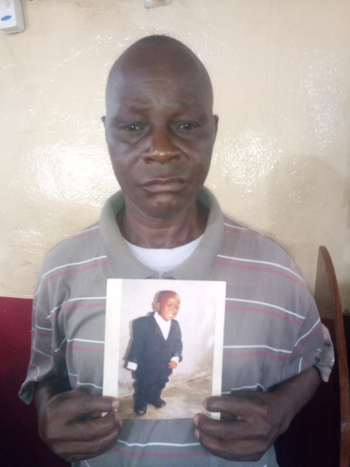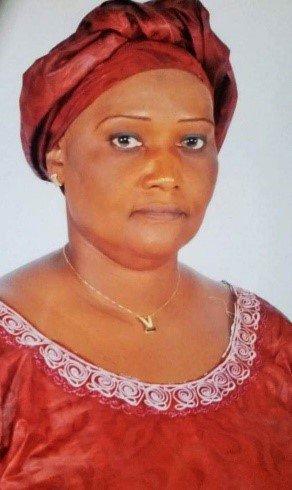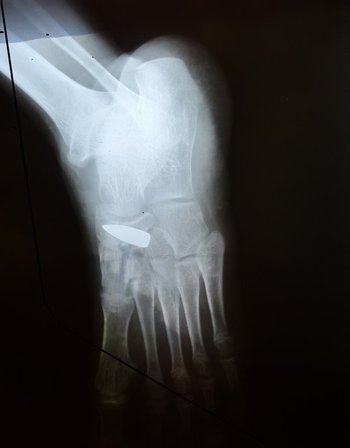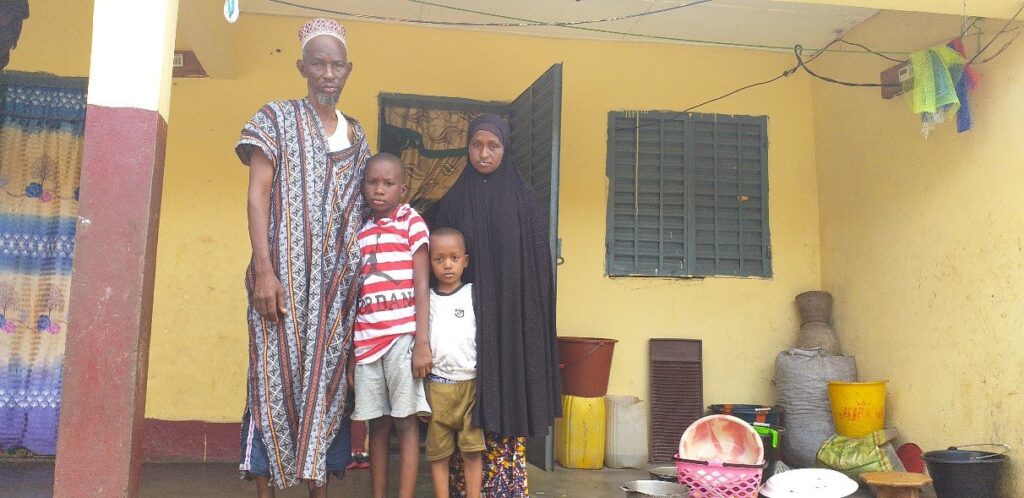The below feature written by Astrid Chitou complements the release of Amnesty International’s report – Guinea: Appalling human rights “red flags” ahead of presidential election – in mid November 2019. Astrid is the Regional Content Manager for West and Central Africa at Amnesty International.
Karomo Mamoudou Conde was a shy but joyous seven-year-old boy who loved playing football. He had just returned home after making a small errand on his mother’s behalf when he was hit by a stray bullet shot by security forces during a protest that had reached his family home on October 10th 2015.
Mamoudou’s untimely death has left a huge hole in his family—his mother still cries whenever she sees children around what would have been his age today. A complaint was filed on the family’s behalf so that they would obtain justice someday. In Guinea, however, if you are injured or killed during protests, the chances that those responsible are held accountable are almost as good as your odds of winning at the lottery.

“Mamoudou’s death left a hole in this family. He was very dear to us, especially his mother. She cries every time. She still cries whenever she sees children around what would have been his age today” – Mr Conde.
Guinea’s human rights situation has historically been fragile and the government’s commitment to fight impunity does not appear to go beyond promises. Unfortunately, delayed justice and impunity have contributed to this fragility.
A DATE TO REMEMBER
September 28 is a date that marks two major events in Guinea’s history; the first was when the nation held a referendum for immediate independence from France in 1958. The second was in 2009, when security forces opened fire against thousands of peaceful demonstrators who had gathered in a stadium in the capital Conakry to protest against the military junta that had come to power the year before.
On the eve of the 28 September 2009, the Minister of Interior at the time announced a blanket ban on all demonstrations. On that fateful day, the security forces stormed the stadium to suppress dissent and killed over 150 people who were trapped inside the stadium amidst tear gas fumes, knife attacks and live bullets. There were over 1,500 people wounded while hundreds of women suffered unspeakable violence in the form of sexual assault and rape out in the open in that stadium.

All of this, in a matter of hours.
Yet the path to justice for the victims and survivors of the September 28 Massacre has been excruciatingly slow for the victims. Mariama, a 47-year-old archivist, is one of the women who attended the gathering at the stadium that day. She filed a complaint along with other victims. Ten years on, those responsible for the 2009 stadium massacre, rapes and other violations have yet to be brought to account.
“We’ve been suffering for 10 years. Some of the victims have died in the meantime. Help us obtain justice” – Mariama.
Guinea has not learned from the atrocities that were committed on 28 September 2009. The list of victims of police violence continues to grow each year. Justice for them, however is as elusive as a mirage.
DEATHS ASSOCIATED WITH PROTESTS
From early 2009 to September 2019, over 421 people died during demonstrations. Thierno Sadou Diallo was one of them.
Thierno was a 34 year old married father of two, with a baby on the way. There was a protest planned near his house on May 7th 2015 and Thierno decided to spend the day in a calmer part of town with his friends. As he was returning home around 7PM, the gendarmerie raided his neighborhood. A group of five men walked towards him and his friends, one of them was carrying a gun and aimed it at them. Without warning, he fired two shots.

One of those shots hit Thierno in his lower back. His friends tried to take him to the clinic but the gendarmes were blocking the streets with their pick-ups. Thierno’s friends forced their way through the blockade and the gendarmes fired at their car. By the time they finally reached the clinic, Thierno had already died. His family filed a complaint the day after he died. His wife, Aissatou gave birth to their last baby boy two weeks later.
“My late husband Thierno was dreaming of a better future for his children and family. He was working every day for that. He was dedicated to his job and family”.
She is still seeking justice for her late husband Thierno. No investigative progress has been made since the family first lodged their complaint in 2015.
HUNDREDS OF BYSTANDERS INJURED
In the last four years alone up until September 2019, there has been over 70 deaths associated with protests, including the death of bystanders.
Hundreds of protesters or bystanders have been injured by the security forces who used live ammunition or tear gas canisters. Among those injured, dozens of children as young as four years old in the last four years. Those victims aren’t just waiting for justice they are also waiting for free, adequate medical care for their wounds. Hady, a 11-year-old boy and Aissatou, a 12-year-old girl are among the victims who will have to live with long-term health issues if nothing is done for them.

Aissatou was shot in her left foot in 2015 in Conakry. Her father immediately took her to a local clinic, but they did not have the necessary equipment to remove the bullet. The medical team said that they could not remove the bullet without the risk of causing additional damage to her foot. The bullet is still lodged in her foot but Aissatou was able to return to school. This is not the case for Hady.
Hady was hit in the back by a bullet on November 2018, as he was returning home from school. His parents took care of all the medical expenses without any financial support from authorities. Hady’s current health condition has made it difficult for him to return to school and pursue his education. Hady needs specialized surgery, but his family cannot afford it. Without further medical assistance, his dream of becoming a banker is wilting away every day.
“He’s crying every time he says he cannot go to school anymore because of the after-effects of his injury.”

ACCOUNTABILITY
Although justice will not bring back the victims of police violence, it will allow the families to know the truth, to see those responsible being punished and to receive reparations, including medical care and other support. Measures should also be put in place to prevent other victims from being added to Guinea’s already long list of victims. From 2015 to September 2019, only one case of a protest related death was brought to justice, resulting in a police officer being sentenced to 10 years in prison.
Political tensions and the brutal crackdown on protests ahead of the 2020 presidential elections could lead to further violence. Several protests are expected to occur as incumbent President Alpha Conde does not exclude the possibility of a third mandate. Hundreds of Guineans have already lost their lives yet few of the perpetrators have been held to account.
While justice for the death and injury of protesters is key to bring healing to the victims and their families, it is time the Guinean authorities to finally put an end to the use of excessive force by the security forces during protests.
(Main image: Demonstrators hold up placards as they take part in a protest against the third term of the Guinean President, on November 7, 2019 in Conakry – Cellou Binani/AFP via Getty Images)
The opinions expressed in this article are those of the author(s) and do not necessarily reflect the views of SAIIA or CIGI.
